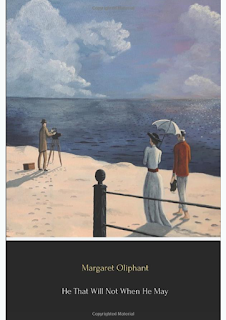Paint it Again, Sam
The famous but oft-misquoted line from Casablanca, "Play it again, Sam", in fact goes like this: "You played it for her, you can play it for me. Play it." I bring this up simply because if you substitute "paint it" for "play it", you arrive at a scenario I've found myself in a couple of times.
Twice now I've had instances where somebody has seen a previous sold painting of mine and asked me if I'd consider painting it again. In both cases my reaction has been "Sure, why not?" (not to be crass, but financial incentives routinely trump artistic interests). Besides, it seems like a straightforward enough task...I mean, I've already been through the exercise once. No fuss or thought required to walk that blazed path again, right?
Except it's not that easy, funnily enough.
In the case of the first piece, it was recreating a work that was fairly old and from a more experimental phase of my career. Here's the original, "After the Theatre":
Twice now I've had instances where somebody has seen a previous sold painting of mine and asked me if I'd consider painting it again. In both cases my reaction has been "Sure, why not?" (not to be crass, but financial incentives routinely trump artistic interests). Besides, it seems like a straightforward enough task...I mean, I've already been through the exercise once. No fuss or thought required to walk that blazed path again, right?
Except it's not that easy, funnily enough.
In the case of the first piece, it was recreating a work that was fairly old and from a more experimental phase of my career. Here's the original, "After the Theatre":
I had painted this one in 2006, and despite it showing up early on in my career, it maintains a certain popularity to this day. It was sometime around 2013 that I was commissioned to paint it again. Commissions, which I've done several of, are also something of a mixed emotional bag for me. On the one hand, they're great because barring some disastrous misread of the client's expectations, they are basically a guaranteed sale. But on the other hand, once a commission is underway, I find much of the inspirational energy is gone. This is especially so if the money is already in hand, which is why I never accept payment up front for them. With commissions much of the creative decision making is already done, and all that remains is execution. This is challenging enough when it's a new piece, but even more so if it's a repaint of a work that you've already done.
With "After the Theatre, Round Two" the difficulties arose almost immediately. I was probably only two years into my art career when I painted the original, and both my style and skill level had advanced a fair bit in the intervening six or seven years. And so it was that I thought to myself "Hey, I can improve this". And so I set about to do so.
But just because you can do something, should you?
From the moment brush met canvas on the repaint, that question became the defining one for this entire project. As the new work took on a life of its own, it was clearly not going to be the same painting. For one thing, it was much bigger (30" x 40") and as such demanded a higher degree of detailing than its more sketchy ancestor.
I also found it difficult, after 7 years of technique refinement, to abandon myself to the sort of creative spontaneity that I had on the initial run. The new painting was very much a product of my new era, and concern started to creep over me that I had strayed too far from the original. Compositionally, the paintings are a match (minus the umbrella), but stylistically not close at all.
Luckily for me, my client loved the new one. Clearly she liked something in the overall scene moreso than the paint technique itself. I breathed a sigh of relief.
As for which painting is "better" I'll let the reader decide. I'll just put this out there...the original still garners a lot of attention, and I still routinely sell prints of it. The new one, not so much.
The next time I had to do a repaint, it was a much more straightforward process. The chosen piece was "Lansdowne Avenue", one of my more popular ones over the years.
The time lapse between the original and the repaint was not as vast this time, so the tactical approach was never a question. The big challenge was one of size. The clients wanted a much smaller piece than the original. The first one was 24" x 30". The new one was to be 10" x 12", less than a quarter the size.
Needless to say, the new one could never have the same level of detail as the predecessor. But with a generous helping of patience, I think I got close enough. Also the new format ratio meant a decent crop was required, and so some of the sides of the frame were sacrificed. Sacrificed too, was the boy's lunch pail. My aforementioned patience for tiny detail had probably worn off by then, and that sacrifice was necessary to prevent me from hurling myself off the nearest bridge.
In the end, this repaint too was well received by the clients.
I think one of the most important lessons in the "Paint it Again" songbook is to relax and let the new version find its own path (unless a customer wants an exact copy, in which case I might recommend a high rez print). As long as the new work is a good painting in its own right, you should be most of the way home.







Comments
Post a Comment